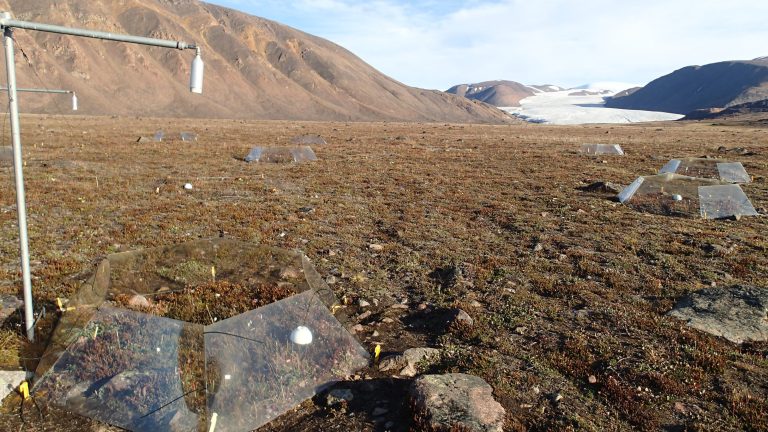

Open top chambers create experimentally warmer conditions for tundra plants at Alexandra Fiord in Nunavut, to examine how they may respond to climate change.
The International Tundra Experiment (ITEX) was founded in 1990 as a network of scientists studying responses of tundra ecosystems to climate change at Arctic and alpine sites across the globe.
A combination of experimental sites – the first of which was set up by Professor Emeritus Greg Henry at Alexandra Fiord, Ellesmere Island, Nunavut in 1992 – and ambient monitoring sites were established to understand how these sensitive ecosystems respond to climate change, both present and future.


Location of ITEX sites. Map created by C. Collins.
Now, a special issue of the journal Arctic Science , led by Prof. Henry, is highlighting the findings generated by three decades of ITEX research.
As a founding member of ITEX, and its Chair from 2003 – 2012, Professor Henry (et al.) reflects on the project’s achievements over the last 30 years:
Along with northern Boreal ecosystems, especially bogs and fens, tundra ecosystems hold enormous stores of soil carbon—as much as 50% of the soil carbon on the planet.
Tundra ecosystems provide important resources for the mostly Indigenous populations in northern high latitudes who have been part of these systems for thousands of years.
However, these ecosystems are changing in response to the rapidly changing climate; the Arctic is warming at nearly four times the global rate.
[…] This special issue presents results from more than 30 years of ITEX research.
The increasing frequency and magnitude of extreme climate events is shown to have strong effects on plant reproduction. The most consistent plant trait response across sites is an increase in vegetation height, especially for shrubs. This will affect surface energy balance, carbon and nutrient dynamics and trophic level interactions.
Common garden studies show adaptation responses in tundra species to climate change but they are species and regionally specific. Recommendations are made including establishing sites near northern communities to increase reciprocal engagement with local knowledge holders and establishing multi-factor experiments.
The success of ITEX is based on collegial cooperation among researchers and the network remains focused on documenting and understanding impacts of environmental change on tundra ecosystems.


